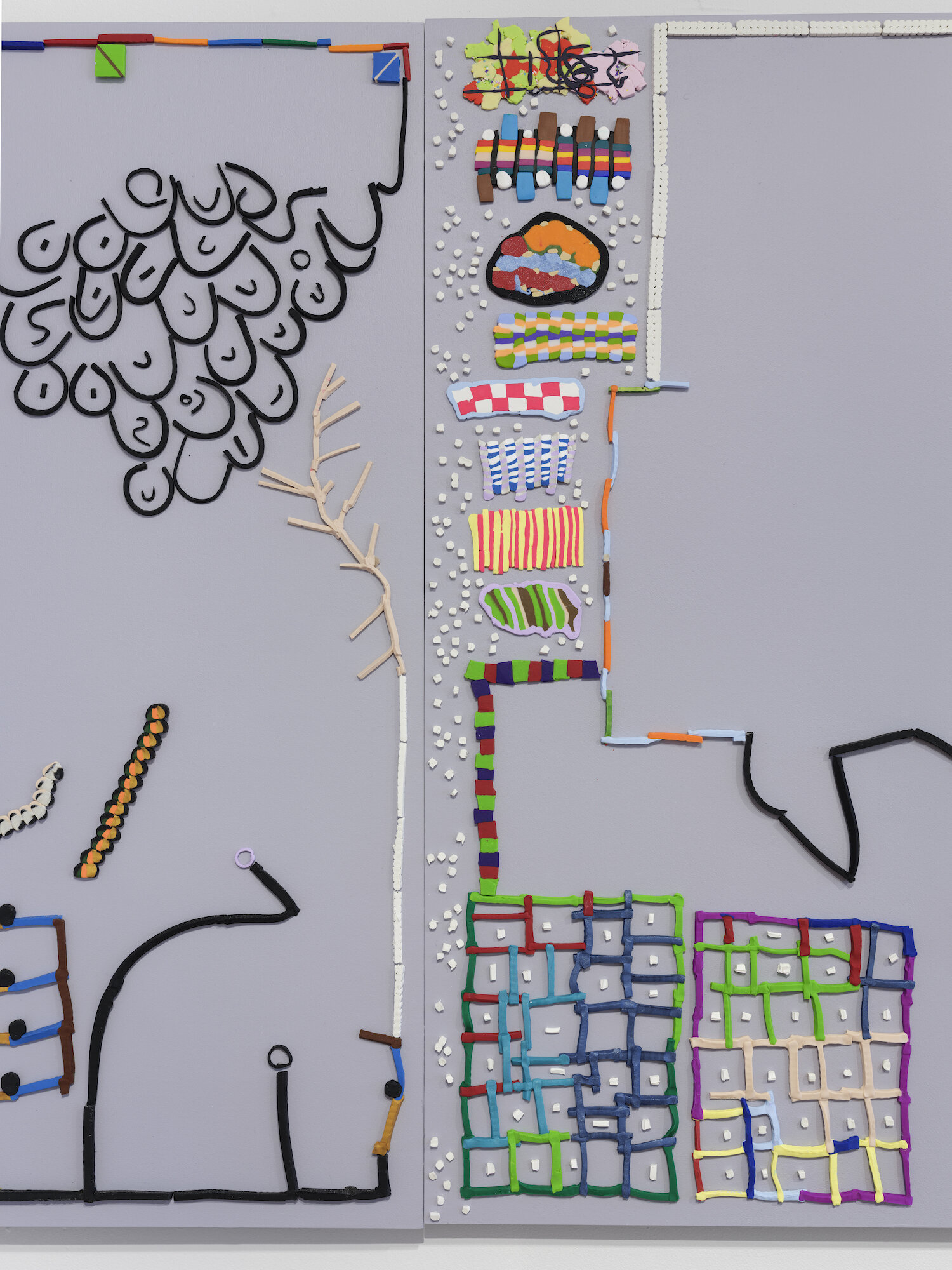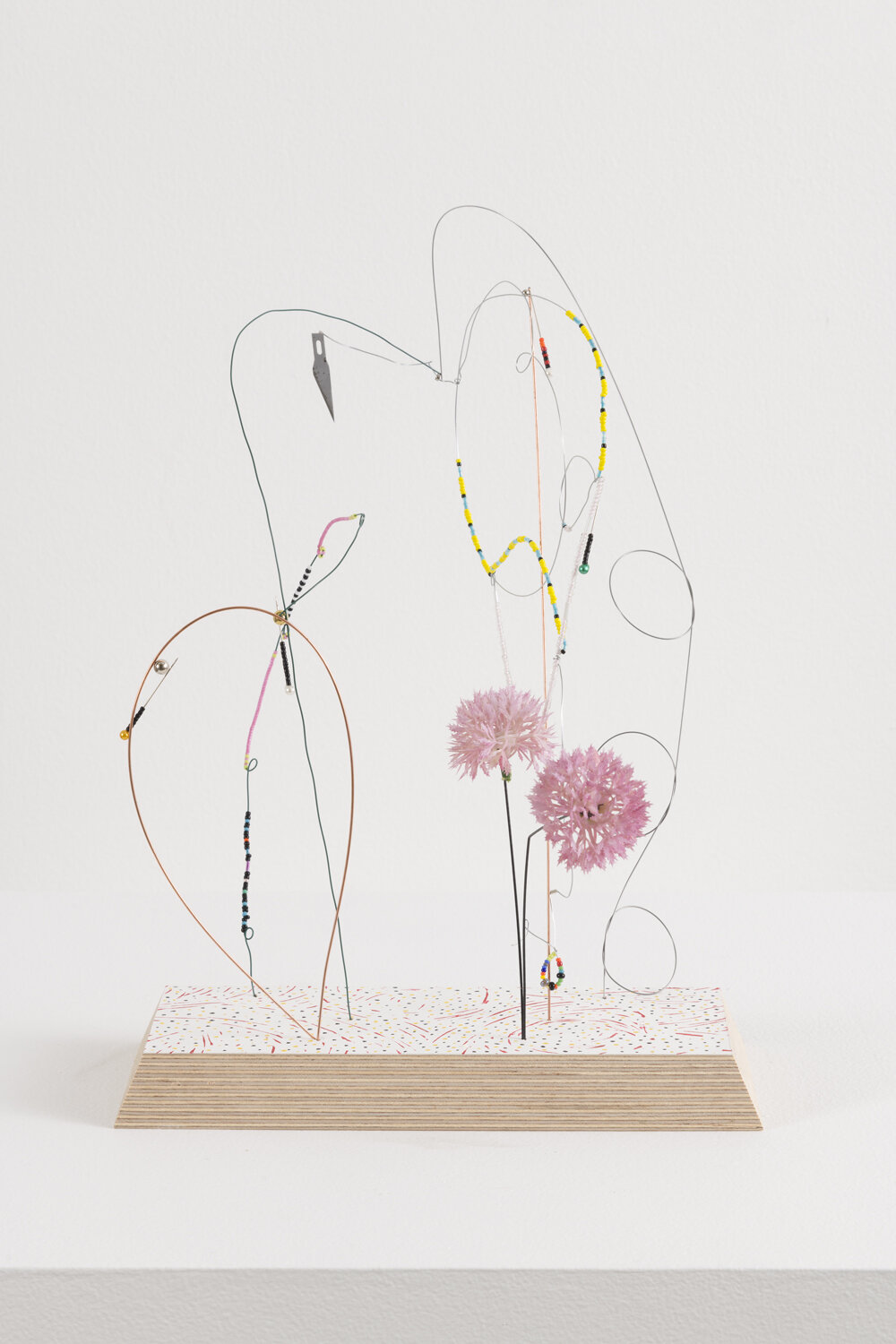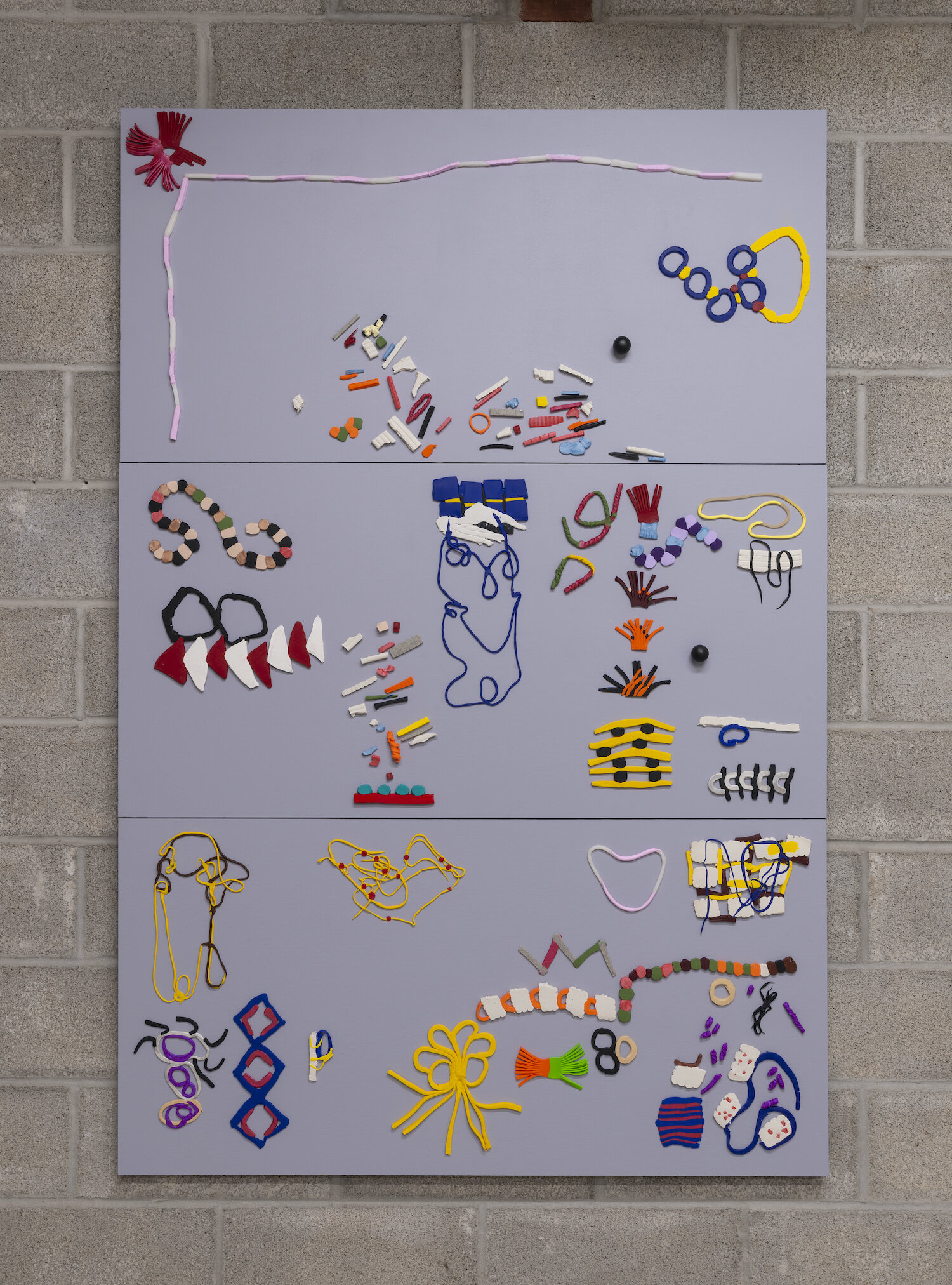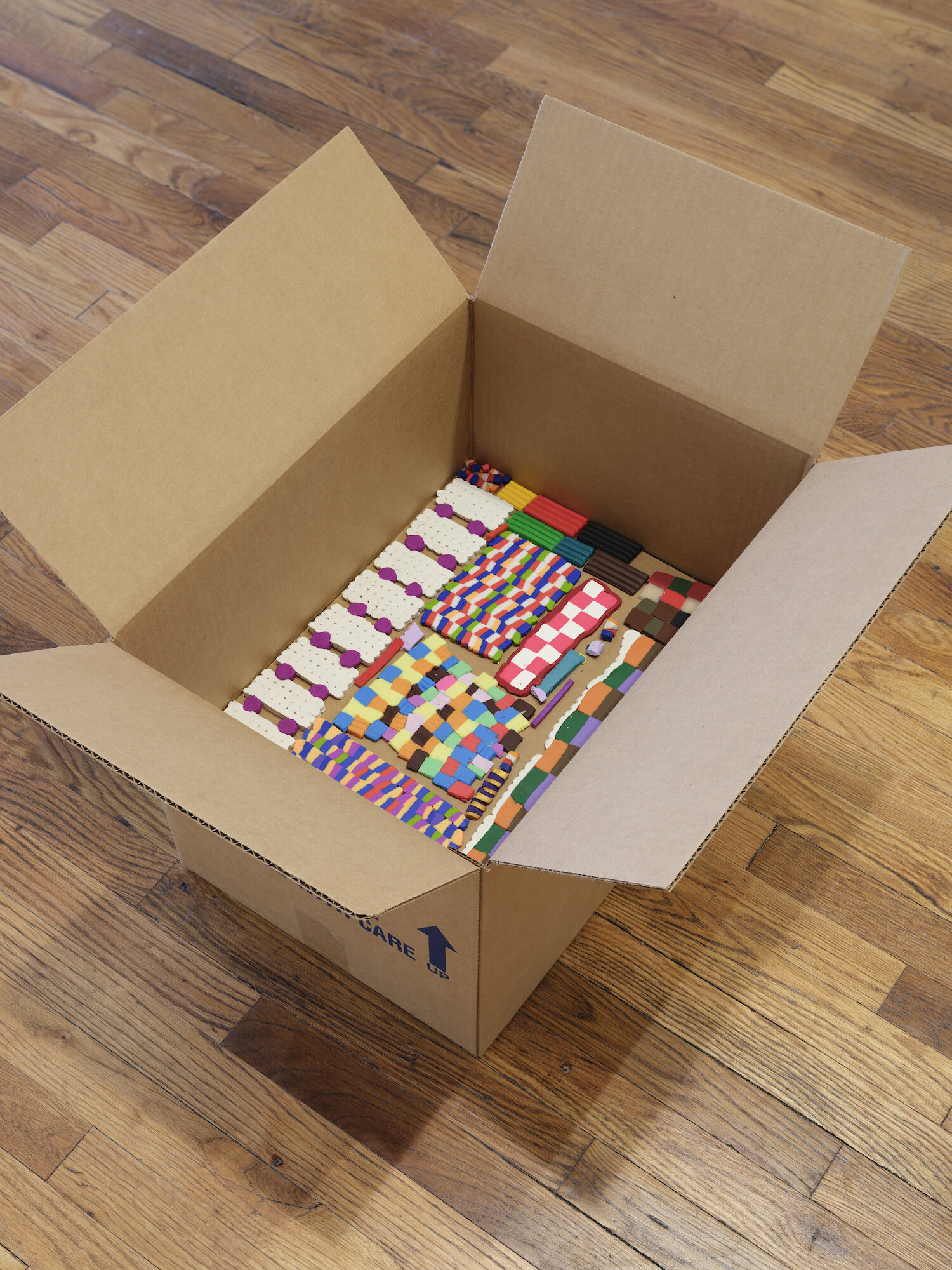Sun You
SUN YOU is a Seoul born, New York based artist. You has exhibited her work in galleries and museums internationally. Recent exhibition venues include The Pit, Glendale, CA, Step Sister, New York, The Anderson Gallery, Virginia Commonwealth University, Richmond, VA , Queens Museum, New York, The Korean Cultural Center, New York, Scotty Enterprises, Berlin, Kunstlerhaus Schloss Balmoral, Bad Ems, Seoul Arts Center, Seoul, SARDINE, New York and The Suburban, Chicago. You was an artist in residence at The Sharpe-Walentas Studio Program, Marble House Project, Atlantic Center for the Arts, Triangle Arts Association, and Künstlerhaus Schloss Balmoral in Bad Ems, Germany. She was also selected as Artists to Watch in 2016 by WIDEWALLS and 18 Artists to Watch, by Modern Painters, 2015.
Interview with Sun You
Questions by Marcus Civin
In your polymer clay works and found object sculptures, a lyrical language of abstraction is at play. This language is not obvious, but it does seem deliberately built. You’ve said that the Korean alphabet informs some of your choices.
My experiences of writing and translating between two languages play a role in the forms I use. I sometimes begin works making Hangul (the writing system of the Korean language) alphabetic characters arranged in configurations that are linguistically meaningless but suggest textual possibilities.
I also find that certain kinds of lines, shapes, and patterns repeat though their colors and inflections change. A shape might repeat or repeat slightly elongated, flattened, or attached to another shape. Curving lines and tile-like clusters suggest meandering pathways. The edges of fringe-like pieces fan out. Your approach feels improvisatory, free, but I imagine it might have some parameters to it. Can you talk about your approach to abstraction?
My work is largely intuitive. I usually group forms based on their shape and color. I also introduce chance as a way to interrupt my own tastes and habits. One thing I’ve been exploring recently is making compositions derived from my process of packing artwork. I bake clay pieces in my kitchen and put them in cardboard boxes to move to the studio. The arrangement of the clay is based on function. I organize them so they won’t break. I started noticing how much I liked these functional groupings and have been using them as the basis for wall works and floor sculptures.
Your recent solo show This Two at Geary in New York included boxes on the floor full of polymer clay pieces. In past exhibits, you've arranged similar pieces on long, low, white bases. To me, these works are like indexes, collections of your gestures.
I like your phrasing about collection of gestures, and it seems apt. I’ve often thought about the floor and pedestal groupings in relation to retail displays of objects like jewelry.
With your work in mind, I think about Vasily Kandinsky's Composition 8 (1923), its bold geometry and ethereal touches, or his later more jolly, wiggly Succession (1935). But surface resemblances are sometimes misleading. Can you share what artists you look to?
I don’t make art with the intention of referencing other artists, but I love the work of Polly Apfelbaum, Isa Genzken, Jonathan Lasker, Richard Tuttle, B. Wurtz, Gedi Sibony, Haegue Yang, Rachel Harrison, Tony Feher, Philip Guston.
You created an artist's book titled Please Enjoy! with Small Editions press in New York. The title could relate to your work overall. I’m thinking about how you discover the properties of the materials you use. There’s joy there. And, you've dedicated yourself to specific materials—wire, beads, clay, false eyelashes. By carefully demonstrating knowledge of your materials, I think you establish a kind of intimacy. What do you think about enjoyment, consistency, and intimacy?
Many of my materials are drawn from interests in my life such as craft and fashion so there is an intimacy and an immediacy to my material choices. I think having fun in the studio is important! I consistently make things without judgment and only edit later.
Polymer clay is often marketed to children. Because you can bake it in a kitchen oven, it's a material people tend to associate with home. How do you feel about childhood and domesticity in relationship to your work? Does polymer clay have that kind of meaning for you?
Yes! I think about baking, craft materials, and play. All those associations are why I chose polymer clay and continue to use it.
I just moved to New York, so I'm currently having a heightened experience of its rhythms and realities. You've lived in New York, Detroit, Seoul. I wonder if you feel that the places you've lived have influenced your work?
Yes. I’ve moved and traveled a lot. The fluidity and lack of a permanent home have influenced how I think about and make art. I’ve always prioritized flexibility and lightness. I want to make things that don’t require fixed production sites, can be packed easily, and made spontaneously.
Unfortunately, we live in dreadful times. Rising violence in the U.S. against Asian people and Black people. The deaths globally from COVID-19. In another interview recently, you discussed your sculptures in relation to impermanence and interdependence. Would you be willing to elaborate on your ideas about impermanence and interdependence?
Impermanence and interdependence aren’t ideas—they’re facts. As a person, I try to embrace this and, as an artist, to materialize it. Some of the ways I do this (in addition to what we’ve already discussed) include sculptures that are held together in precarious arrangements using magnets and gravity. Each time they’re displayed, they shift and change.
Interesting. You are also a curator. Can you talk about your work as a curator?
My curatorial projects are based on my artistic and life interests. These include themes of artist migration and gentrification (Location, Location, Location, 2013), feminism and physical flexibility in new sculpture (FOUR x HIGH, 2017), everyday materials in artmaking (glorious modest, 2017), intergenerational inspiration among artists (Fabulous You, 2016), blurring the line between gallery, studio, and commercial shop (Tops, 2012).
What's next for you?
I have three upcoming group shows at Millersville University in Pennsylvania, Mana Contemporary in Chicago, and Rocky Mountain College of Art and Design in Colorado. I am also curating a show in September with my husband, Ethan Greenbaum, an artist, writer, educator, and curator—our first time curating together, which I am super excited about.








